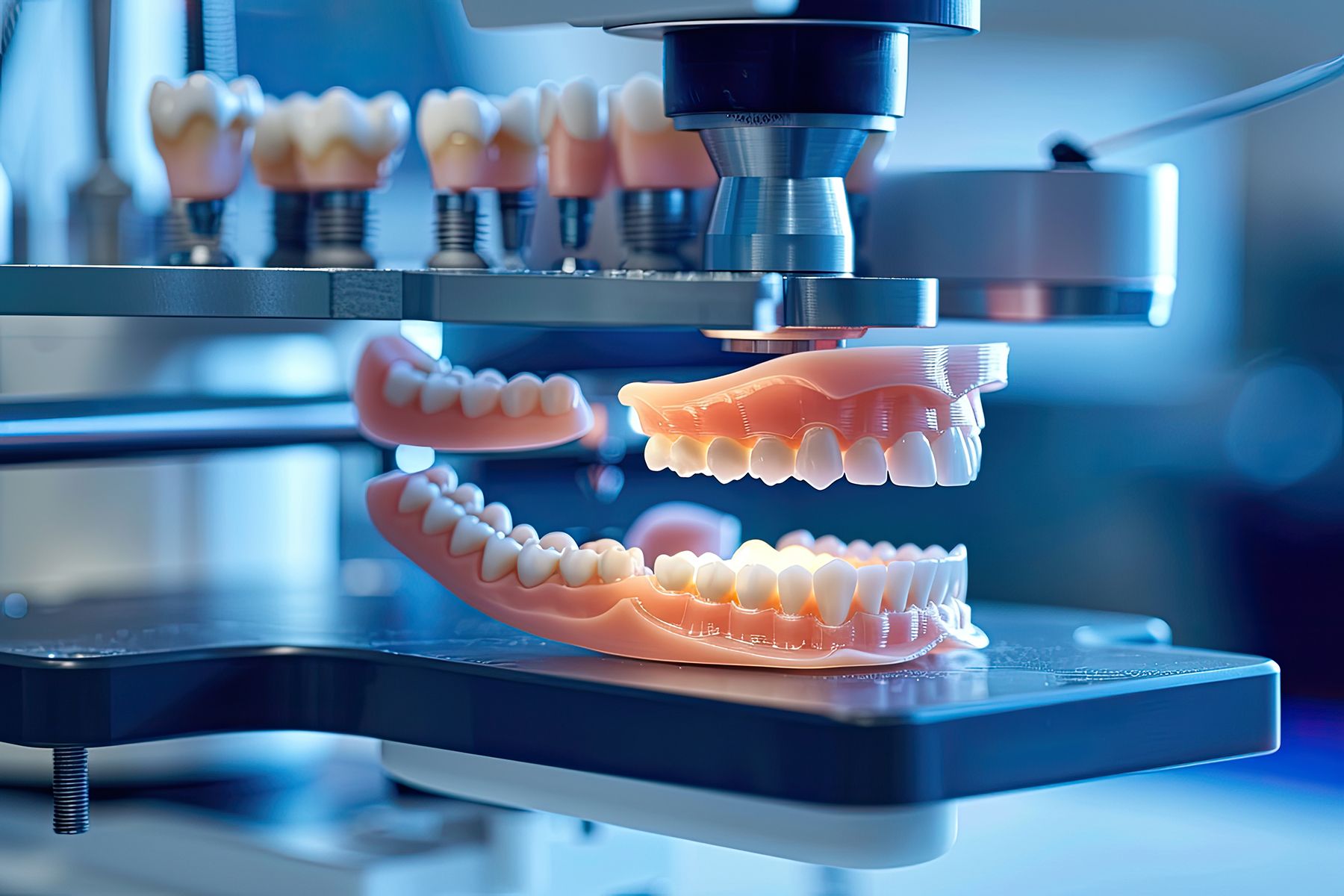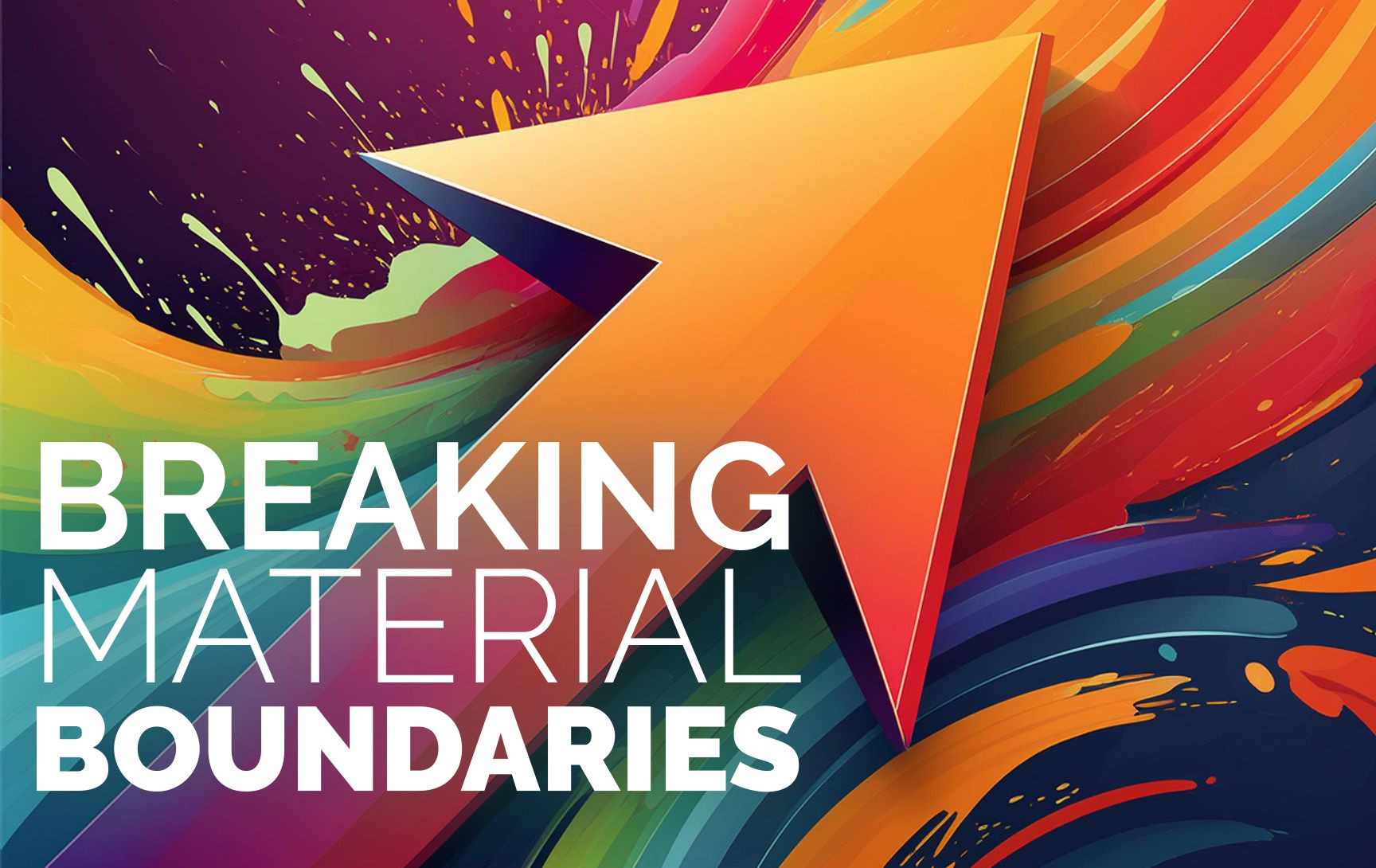What's New In 3D Printing Resins, Digital Dentistry Workflows
Industry experts share their thoughts on 3D printing resins, digital dentures, and more as we follow up on the 2024 Materials Survey.
What’s New In 3D Printing Resins, Digital Dentistry Workflows | Image Credit: © Santasombra - stock.adobe.com / AI Generated

Anyone paying attention at all the last couple of years knows that 3D printing has taken off in several industries, including changing the way many dental laboratories and clinicians work to deliver the best possible restorations for dental patients.
In the May 2024 issue of Dental Products Report, we published some results from the 2024 Materials Survey with commentary from clinicians who focused on direct restoratives, bioactive materials, and preventive materials. You can read “Breaking Material Boundaries” by clicking here.
Here in this follow-up article, we take a close look at other material categories, namely 3D printing resins, dental milling, and digital dental workflows. Jamie Stover, CDT, Senior Manager of Application Strategy and Integration, Oral Health, Carbon, Inc, and Eric D. Kukucka, DD, Vice President Clinical Removable and Design Technologies, Aspen Dental, share their thoughts on how materials and technologies are impacting the way clinicians and lab techs work today.
“I am fortunate to have a unique perspective on the dental industry, as I am Chair of the National Board for Certification in Dental Laboratory Technology and in my role at Carbon, oversee application strategy and integration globally. This means I am interacting with labs of all different sizes, calibrating on their challenges, and providing strategic solutions,” Stover explains.
“In a nutshell, the challenges and trends we see continuing to evolve are labs struggling to find and hire experienced removable techs (they are aging out of the workforce), access to digital technical training resources for techs, the high cost of overall labor, labs adopting 3D printing for production of many applications, the explosive growth of 3D printed dentures, and evolution of denture resins.”
Lucitione Digital Print (Dentsply Sirona) and Flexcera (Desktop Health) are examples of ISO high impact strength rated 3D print denture resins available currently, which allow labs to produce a strong, esthetic denture that brings many benefits to patients and clinicians, according to Stover. These benefits include reduced appointments, better fit, and a digital record for quick reproducibility just to name a few.
“The intersection of hardware, software and materials is complex and workflow efficiency is dependent on more than just material development and new resins on the market, because producing parts via 3D printing is the easier part for labs,” Stover adds. “Due to staffing challenges, a lack of experienced technicians, and rising labor costs, labs are searching for methods which allow them to fabricate restorations without the need for as much analog labor.”
Breaking Material Boundaries / Image by Kristen Morabito / MJH Life Sciences Using AI

Stover says Carbon is addressing the challenges associated with labor shortages by releasing automated CAM software to reduce the amount of technician time it takes to support and arrange parts prior to printing, and hardware automation that removes parts from the build platform automatically and allows continuous printing without the need for a technician tending the printer for up to 12 hours. He adds that Carbon is also developing a 3D print resin for flexible removable partial dentures, which will bring similar benefits of 3D printed denture workflow to an application that currently can only be made by hand or milled.
In February, Carbon launched its new Automatic Operation (AO) Suite of solutions for dental laboratories, designed to improve 3D printing workflow efficiency. The AO Suite will launch with 3 solutions—Automatic Print Preparation, AO Backpack, and AO Polishing Cassette—and the AO Suite will be a scalable option that labs can grow with. Also in February, Carbon announced the validation of 3 notable resins for its platform–Pac-Dent Rodin Sculpture, Desktop Health Flexcera Base, and Keystone KeyGuard. The resins are now suitable for the Carbon platform, expanding manufacturing capabilities for dental labs.
Kukucka, a denturist from Windsor, Ontario Canada, and a respected authority and international lecturer in digital denture technology, was an early adopter of 3D printing and using technology to change the way dentures are delivered to patients. 3D printed and milled denture materials offer several advantages over traditional denture fabrication methods for today’s digital denture solutions, he says.
These advantages, according to Kukucka include:
Better Fit and Function: Enabling improved fitting surface of dentures due to the micrometric precision in the manufacturing process offered by these technologies results in that fit better and function more effectively. This can improve speech clarity, chewing ability, and overall oral health. The digital manufacturing process removes a significant amount of the error-prone processes associated with analog removable prosthetics.
Speed: Both additive and subtractive manufacturing can significantly reduce the time required for denture production compared to conventional methods. This means patients can get their dentures faster, reducing the inconvenience of multiple appointments. However 3D printing is generally faster than milling, especially for complex designs that have deep undercuts as well as the ability to print multiple restorations in one cycle. It requires minimal manual intervention and can produce dentures in a relatively short time frame. On the other hand, milling may take longer, particularly for intricate designs or materials that require multiple milling stages.
Material Variety: Today’s 3D printed and milled technologies support a wide range of materials, from PMMA materials and photopolymers that provide significantly improved performances when compared to conventional materials. This versatility allows for the selection of materials that meet specific patient needs in terms of durability, aesthetics, and biocompatibility.
“Overall, 3D printed and milled denture manufacturing and materials represent a significant advancement in removable prosthodontics, offering superior efficiency, esthetics, fit, and functionality compared to traditional methods,” Kukucka says. “Ultimately, the choice between 3D printing and milling depends on factors such as the required precision, material properties, design complexity, production speed, and desired surface finish.
“Dentists and dental laboratories may choose one technology over the other based on these considerations and the specific needs of each patient. Both technologies have their advantages and limitations however have both been instituted in the industry.”
In regards to 3D printed resin systems, he recommends Dentsply Sirona’s Lucitione Digital Print Denture system and the SprintRay APEX (High Impact Denture Base and Denture tooth material). For the milling, Kukucka prefers the Ivotion Denture System from Ivoclar.
3D Printing
Kukucka adds that 3D printing has revolutionized the field of digital dentures in several ways, including reduced waste, improved efficiencies, and cost savings.
“3D printing enables dentists to produce dentures with greater efficiency, leading to reduced material waste compared to traditional methods, enabling improved precision and accuracy, which translates to improved comfort and functionality,” he says.
Additionally, 3D printing enables higher throughput in the manufacturing process being able to print a multitude of restorative indications simultaneously. When compared to the traditional methods of denture production, dental professionals can save hours between active and passive time, Kuckucka states. This further enables faster time to teeth.
“3D printing is more cost effective, the point of entry is typically lower than milling technology,” he adds. “While some of today’s 3D printers may have a higher point to entry from a cost perspective over time, it can lead to cost savings due to reduced labor and material costs and increased throughput.”
For more survey results and articles on the Dental Products Report 2024 Materials Survey, visit dentalproductsreport.com.